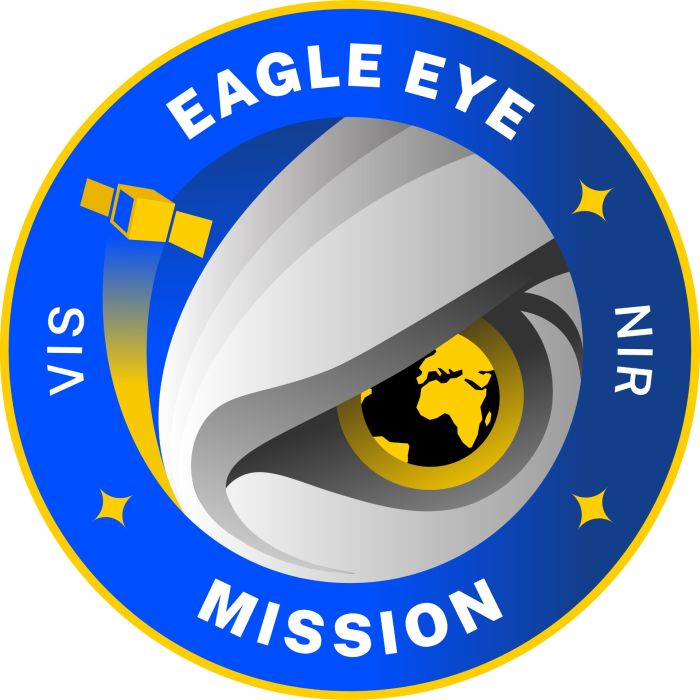Poland's largest satellite to be launched into orbit this year
 Photo from press release
Photo from press release
Poland's most advanced and largest satellite will be launched into Earth’s orbit this year, the company co-responsible for its construction reports. The mass of the orbiter is comparable to the combined mass of all Polish satellites built so far.
EagleEye, developed by the Space Research Centre at the Polish Academy of Sciences in collaboration with Creotech Instruments and Scanway, has been built on the modular, universal HyperSat platform, which makes it possible to carry out various types of space missions. 'The platform is a key element of many civilian and military projects at the national and European level,’ a Creotech Instruments press release says.
EagleEye is the first satellite designed and built in Poland with a mass greater than 50 kg. Only eight capital groups in Europe build such large orbiters, there are a few dozen such companies around the world.

'The mass of our satellite is comparable to the combined mass of all dozen or so Polish satellites built since the beginning of Polish participation in space exploration. EagleEye will weigh over 50 kg. In addition to our proprietary HyperSat platform, it will also test the first Polish high-resolution Earth imaging system built by Scanway and the instrument computer developed at the Space Research Centre of the Polish Academy of Sciences. (...) We are opening the door for domestic entities to the rapidly growing and profitable market of designing, building, integrating and launching small satellites weighing over 50 kg,’ says Creotech Instruments CEO Dr. Grzegorz Brona,.
EagleEye will operate in Very Low Earth Orbit (VLEO). An altitude of approximately 300-350 km will allow for precise imaging of the Earth. Currently, the orbiter is undergoing final tests and inspections required by SpaceX, with whose rocket the satellite will soon be integrated.
Creotech Instruments is responsible for carrying out the entire mission, i.e. preparing the HyperSat satellite platform and its components, integrating the satellite and launching it into Earth’s orbit in cooperation with ExoLaunch, the SpaceX integration operator. The Polish company will also ensure communication with the satellite once it is in orbit.
The HyperSat satellite platform has been in development since 2017. The modular design of the platform enables its adaptation to individual requirements for missions with various applications and profiles. Creotech Instruments also intends to support satellites weighing up to 200 kg in the next few years.
'In the future, the HyperSat platform may be used for optical, radar and communication missions. Also those related to 5G connectivity, orbital logistics and the Internet of Things, scientific research, security and defence,’ says Brona.
The HyperSat platform was selected by the German company OHB for the first test refuelling mission of a satellite in Earth orbit. Creotech Instruments, commissioned by ESA, will also participate in the European lunar mission, the aim of which is to map the natural resources of the Moon via a satellite based on the HyperSat platform.
The Polish platform will also be used in the European Defence Fund REACTS project, which assumes the construction of rapid response technologies for use in crisis situations. HyperSat is the basis of the Polish PIAST mission (Nanosatellite constellation of optoelectronic imaging reconnaissance PIAST - Polish ImAging SaTellites), in which three Polish Armed Forces nanosatellites will be launched into space.
'The use of orbital data and Internet satellite communications during the war in Ukraine shows that small satellites provide a high level of security. Thanks to the low production cost, the armed forces can operate larger constellations within the same budget, providing faster access to precise terrain imaging, continuous communication in the event of a threat and uninterrupted intelligence monitoring of the enemy's electronic and radio signals. Satellites weighing from approx. 50 to 200 kg, i.e. micro- and mini-satellites, are most often used to carry out these advanced tasks,’ says Marcin Mazur, EagleEye project leader at Creotech Instruments.
According to data from the analytical company Euroconsult, in the years 2013-2022 the small satellite market reached a value of USD 30 billion, and it is expected to reach USD 111 billion by 2032. In the next decade, an average of 2,600 satellites per year may be launched into orbit, i.e. approximately seven small objects of this type per day. This class of space objects includes SpaceX's internet connectivity Starlink satellites, Planet's OneWeb Earth optical imaging orbiters and Spire's navigation satellites. Small satellites are beginning to be used to precisely observe the Earth in visible light, infrared and with radar, and provide global radio communications with ships and aircrafts. (PAP)
PAP - Science in Poland
abu/ zan/ kap/
tr. RL
Przed dodaniem komentarza prosimy o zapoznanie z Regulaminem forum serwisu Nauka w Polsce.

















